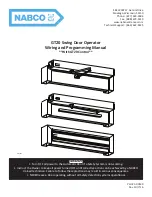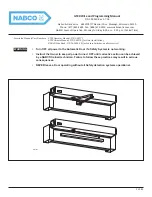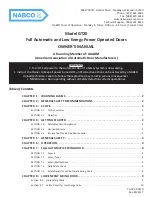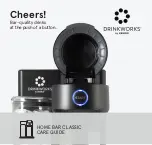
39
Safety in Welding - 4
THE WELDING ARC MAY CAUSE BURNS
: During the welding operations,
appropriate masks, filters and protective lenses should be used for protecting the
eyes against the light emitted by the welding arc and the flying particles. The skin
should be protected using fire-resistant clothing. The people in the vicinity should
be protected by panels made of fireproof materials, they should not look at the
welding arc directly and must be warned against effects of the arc light.
Even short periods of exposure to the UV rays may cause eye burns called “welding
dazzle”. The person affected may not be aware of the “welding dazzle” for hours
after exposure, which can become extremely disturbing in the end and even cause
temporary loss of sight. Normally the eye dazzle is a temporary condition, but long
term exposure of the eyes to the UV rays may result in permanent damages in the
eyes. As protective measures besides not looking at the welding arc, a protective
welding mask with appropriate filtering lens should be used.
The following table may be used for selecting the proper filter against arc welding
with shielded electrodes.
From ANSI Z49.1-2005
WELDING SPLASHES MAY CAUSE FIRE OR EXPLOSION
: Keep the flammable
materials away from the welding areas and maintain a fire extinguisher at an easily
accessible place. The splashes and hot materials ejected by arc welding may fly
around easily even from the narrowest opening. Do not perform any welding on
any barrel, container or material until making sure that the measures required for
removing the flammable and noxious gases from the environment are taken. Never
operate the machine in places, where flammable gases, vapors or fluids may be
present.
Keep the possibility of fire risk in mind as arc welding may produce very high
temperatures.
The welding arc temperature may reach 5000°C, but heat alone is not a reason for fire
generally. The fire risk is created by the sparks and molten metal particles splashing
around. Such metal splashes may reach ten meters of distance. Therefore, keep the
easily flammable materials away from the welding environment. Furthermore, make
sure that your work piece does not contact any material that might flame as it heats
up. The materials that might catch fire when heated are divided in to three groups
as fluids (gasoline, oil, paint, thinner, etc.), solids (wood, cardboard, paper etc.) and
gases (acetylene, hydrogen etc.)
Welding
Method
Electrode
Diameter
(mm)
Current Range
(Amper)
Protective
Filter
(lower limit)
Protective
Filter
(recommended)
Covered
Electrode
Arc
welding
< 2.4
2.5 - 4.0
4.0 - 6.4
> 6.4
< 60
60 - 160
160 - 250
250 – 550
7
8
10
11
-
10
12
14
Protective Filter Selection Table
U
S
E
R
MAN
U
AL
Содержание 201 TIG PFC
Страница 24: ...56 Electrical Connection Diagram USER MANUAL ...








































